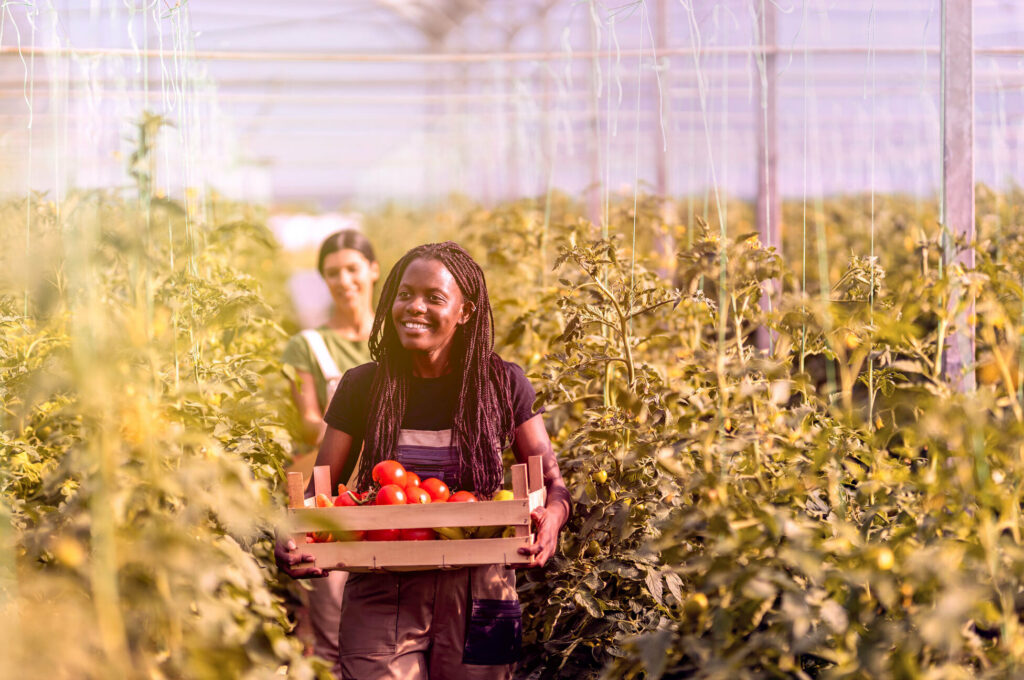Sunday Times Agriculture PR
The Link Between Agriculture And Alleviating Poverty
Author: Roux Wildenboer, Sector Head: Agriculture, Absa CIB
If we consider the latest research from the World Bank into account, it is clear that the world won’t be able to reach zero poverty and zero hunger as set out in Sustainable Development Goals 1 and 2, and that nearly 7% of the world’s population will still be living in extreme poverty by 2030. In August 2022, the World Economic Forum reported2 that around 20% of people in Africa were facing chronic hunger, compared with only 10% globally.
As a bank that is focused on unlocking economic potential in Africa, these statistics are some that keep us awake at night.
Agriculture is a key sector in many developing countries and has been recognised as a driver for poverty reduction as well as having the potential to provide income and employment opportunities for people living in rural areas, where poverty rates are higher.
The link between agriculture and poverty alleviation is well-established. A strong and efficient agricultural sector can contribute to economic growth, improve food security, and increase income and employment opportunities for rural communities. In turn, this can help reduce poverty and improve the living standards of those involved in the sector.
According to the World Economic Forum’s Insight Report, that was published in January 2023 — AfCFTA: A New Era for Global Business and Investment in Africa3— The African Continental Free Trade Area will be transformative for many of Africa’s industries but given agriculture’s already central role in the continent’s economy, and its huge potential for growth, agriculture will be a prime beneficiary.
The report confirms that agriculture has exceptional potential for increasing intra-African trade, meeting local demand, accelerating GDP growth, creating new jobs, and improving inclusivity due to upstream and downstream linkages. It will further increase beneficiation, meet new local demand, and bring small hold farmers — who are responsible for 80% of Africa’s food production — into wider supply chains. This will without a doubt alleviate poverty in the free trade area, one of the world’s largest by number of people and economic size, as it is projected to host 1.7 billion people and oversee $6.7 trillion in consumer and business spending by 2030.
Despite this, the potential of the agricultural sector cannot be fully realised without the support of financial institutions such as banks who provide the capital to invest in their businesses, improve productivity, and expand their operations.
By its nature, the agriculture sector is very capital intensive when it comes to its funding requirements. This makes it hard for new entrants to break into the market. Buying land or equipment does not come cheap and neither is infrastructure development for both primary and agro processing. This is further compounded by very lumpy cash-flows that are associated with seasonal production. These obstacles are making it difficult for farmers to grow.
Financial services institutions can help farmers to purchase seeds, fertilisers, and support other input costs necessary for crop production, as well as invest in farm infrastructure such as irrigation systems and equipment.
Furthermore, banks can play a crucial role in helping to improve access to markets for agricultural products. By providing trade financing, they can help farmers and agribusinesses to export their goods to regional and international markets. Opportunities in countries such as Saudi Arabia, India, China, Malaysia, and the rest of the African continent exist, but farmers rely on banks to help them unlock these opportunities with fit for purpose trade finance solutions.
In order to fully realise the potential of the agricultural sector, banks need to develop innovative financial products and services that are tailored to the needs of farmers and agribusinesses. This includes providing financing for small-scale farmers who may not have the collateral or credit history to access traditional loans.
For example, between 30-40% of SA’s cattle herd operates in the “informal” economy. If we can provide the funding mechanisms to help these small-scale farmers to commercialise this asset, we can turn them into meaningful players in the sector however, this will require cooperation and buy-in from stakeholders across the value chain, and strong financial backing to streamline the process.
The link between agriculture and poverty alleviation is clear. Banks have a critical role to play in supporting the sector. Absa is continuously looking for ways to unlock the potential of the agricultural sector and contribute to poverty reduction and economic growth.





